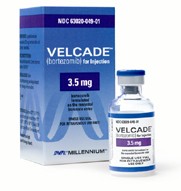
Recently Diagnosed or Relapsed? Stop Looking For a Miracle Cure, and Use Evidence-Based Therapies To Enhance Your Treatment and Prolong Your Remission
Multiple Myeloma an incurable disease, but I have spent the last 25 years in remission using a blend of conventional oncology and evidence-based nutrition, supplementation, and lifestyle therapies from peer-reviewed studies that your oncologist probably hasn't told you about.
Click the orange button to the right to learn more about what you can start doing today.
- You are here:
- Home »
- Blog »
- Multiple Myeloma »
- Multiple Myeloma Diagnosis t(4:14) No ASCT-
Multiple Myeloma Diagnosis t(4:14) No ASCT-

- MM Survivor
- MM Coach
- Director PeopleBeatingCancer
Recommended Reading:
Anticancer effect of curcumin on breast cancer and stem cells
“Numerous studies have shown that curcumin, a natural compound, exerts anticancer effects by inhibiting cancer cell proliferation and metastasis and by inducing cell cycle arrest and apoptosis.
In particular, curcumin exhibits potent inhibitory effects on breast cancer, the most prevalent type of cancer among women worldwide. It has low maximal inhibitory concentration for breast cancer cell lines that express the hormone receptor ER and sensitizes cell lines to anticancer drugs.
Moreover, it can induce apoptosis in cell lines independently of hormone receptor expression. In addition, curcumin inhibits the proliferation of breast cancer stem cells (BCSC), an important factor that influences cancer recurrence…”
Curcumin induces cell death of the main molecular myeloma subtypes, particularly the poor prognosis subgroups.
- 16 HMCLs were highly sensitive to curcumin (LD50 < 20.5 μM),
- 6 HMCLs exhibited intermediate LD50 values (20.5 μM ≤ LD50 < 32.2 μM)
- and only 7 HMCLs were weakly sensitive (35 < LD50 < 56 μM).
Synergistic effects of curcumin and bortezomib on multiple myeloma cells
“When the cells were treated with curcumin and bortezomib combination, the cell proliferation was further significantly declined, and the apoptosis was further enhanced, compared with the curcumin treatment alone at corresponding concentrations.
When these cells were treated with the curcumin and bortezomib combination, the activation of caspase-3 and -9 was further enhanced, while the expression levels of NF-κB and HSP-90 were further decreased.
Curcumin and bortezomib could exert synergistic effects on MM1.R cells, inhibiting cell prolifera- tion and enhancing cellular apoptosis, which involves the regulation of the expression levels of NF-κB and HSP-90 in these cells.
Use of bortezomib to overcome the poor prognosis of t(4:14), but not del(17p), in young patients with newly diagnosed multiple myeloma.
“A translocation t(4:14) was observed in 106 of these 507 patients treated with VD, whereas del(17p) was found in 60 patients.
Of note, 10 patients presented both the t(4;14) and the del(17p). The median PFS was 28 and 35 months, in patients with or without the t(4;14), respectively (p<0.02). At 3 years, 73% of the patients with t(4;14) were still alive, as compared to 89% of the patients lacking the translocation (p=0.002).
For comparison, the OS results were respectively 48% (patients with t(4;14)) and 73% (patients lacking the translocation) in patients treated with a VAD induction within the same period.
Thus, it seems that VD is able to significantly overcome the poor prognosis of t(4;14).
We also looked at the prognostic value of del(17p) in this series of patients treated with VD. In contrast to the t(4;14) situation, VD was enable to rescue patients with del(17p) (same PFS and OS for patients treated with VD than for those treated with a VAD induction).
#AskDrDurie: What are some treatment options for the t(4;14) abnormality?
In this episode of #AskDrDurie, IMF Chairman Dr. Brian Durie discusses treatment options available for those myeloma patients with the t(4;14) abnormality, including IMiDs, next-generation proteasome inhibitors, novel combination therapies, and autologous stem cell transplants.
DR. DURIE: This week’s #AskDrDurie question is from a patient who has the translocation 4;14 abnormality.
So this means that when the bone marrow was done, most likely at the time of diagnosis, FISH testing showed a problem with chromosome four and 14, with a switching of these two types of chromosomes.
This is a type of abnormality that is called an intermediate risk, so this means that many treatments will work well in this situation, but oftentimes the length of the remission of the response is shorter than average. And so, this particular patient asks,
‘What treatment should I use now? I had a very excellent response with Velcade upfront, but now the myeloma has relapsed, and so what are the additional options and therapy that could be considered?…”




